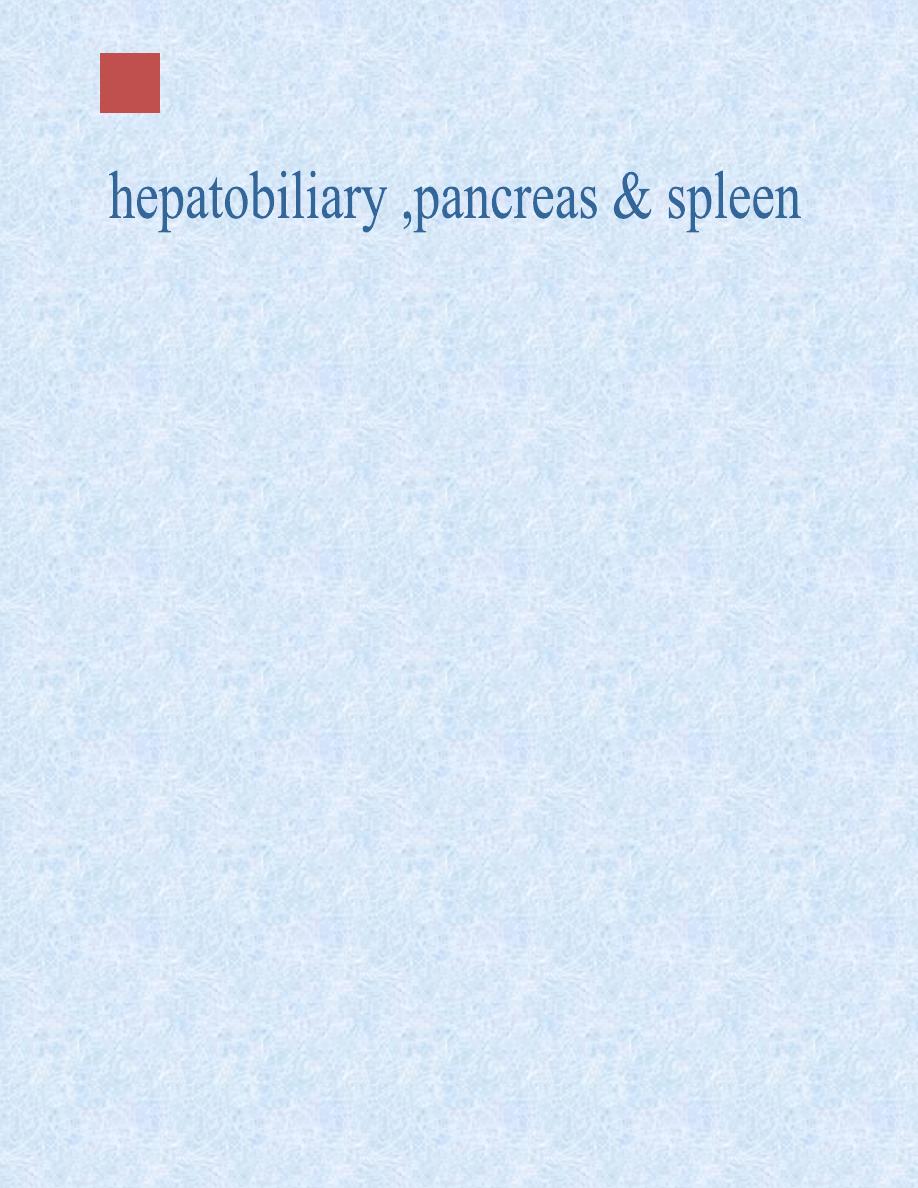
1
Hepatobiliary system Dr. KHAEEL IBRAHEEM
Imaging techniques:
Ultrasound: is particularly useful for diagnosing GB disease,
recognizing biliary dilatation, diagnosing cysts & abscesses &
defining perihepatic fluid collection.
CT & MRI are particularly sensitive for detecting mass lesions e.g.
metastases & abscesses.
Radionuclide imaging.
Invasive studies e.g. PTC, ERCP, and operative cholangiography.
Liver
Ultrasound:
The normal liver parenchyma is of uniform echotexture with portal &
hepatic vessels. The normal liver size & shape is variable
Focal masses are noted as alteration of normal echo pattern. They
can be divided into cysts, solid masses or complex masses. Cysts can
be assumed to be non-neoplastic. Solid & complex masses may be
benign or malignant. Most benign solid masses are encapsulated with
a relatively sharp margin, whereas malignant lesions demonstrate a
more irregular border.
√In practice, it is difficult to distinguish benign & malignant lesions
unless the mass is clearly a simple cyst.
√When multiple masses are seen, metastatic disease is the likely
diagnosis. The prime differential diagnoses of multiple masses are
multiple abscesses, regenerating nodules in cirrhosis & multiple
hemagiomas.
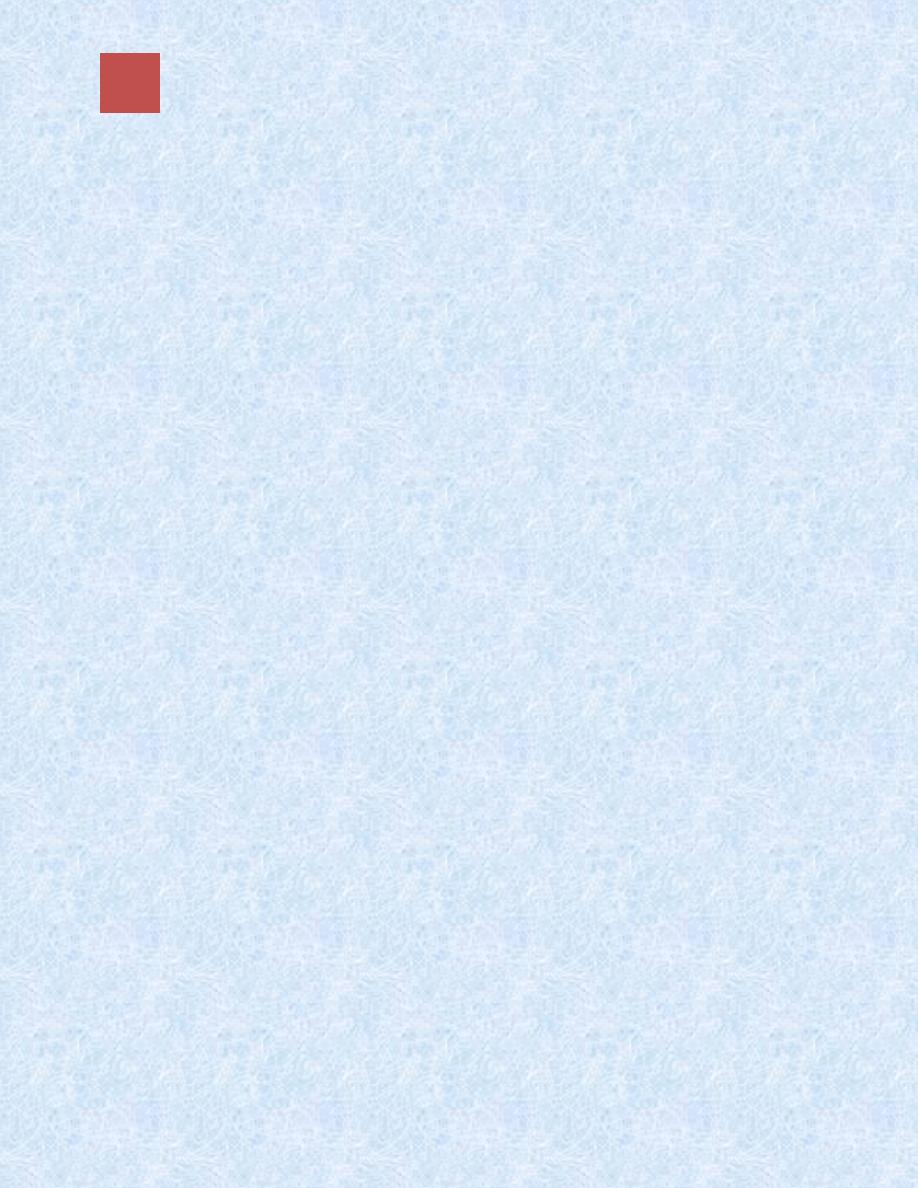
2
Hepatobiliary system Dr. KHAEEL IBRAHEEM
∆Diffuse parenchymal diseases (diffuse chronic inflammation &
diffuse neoplastic infiltration) can cause generalized increase in
echogencity & are difficult to distinguish from one another.
CT:
∆i.v contrast is usually given to emphasize the density between
normal parenchyma & pathological lesions. The liver has dual blood
supply from hepatic artery & portal vein.
∆As an aid for planning surgery, the liver is divided into 8 segments
determined by hepatic & portal veins.
∆the normal intrahepatic bile ducts are not visible; the normal
parenchyma is of uniform density. The biliary system distal to the
right & left hepatic ducts can be identified.
MRI:
∆ Is used as problem solving technique to give additional information
to US & CT. it is a good technique for demonstrating primary &
secondary tumors & is often used when surgery is contemplated.
∆i.v. contrast is used to improve visualization & help characterize
lesions.
Liver masses:
US, CT & MRI are all good methods of deciding whether a mass is
present but it may be possible to predict the nature of the mass (as in
cysts & hemangiomas) but frequently the diagnosis depends on
biopsy.
Malignant neoplasms:
∆Metastases are more common than primary tumors, both can be
multifocal. They are often multiple, situated peripherally & of
variable size.
US shows increased or decreased echogencity, they may show a
complex echo pattern with central necrosis, even may resemble
cysts, some metastases have an identical to that of surrounding
parenchyma & can't be identified by US.
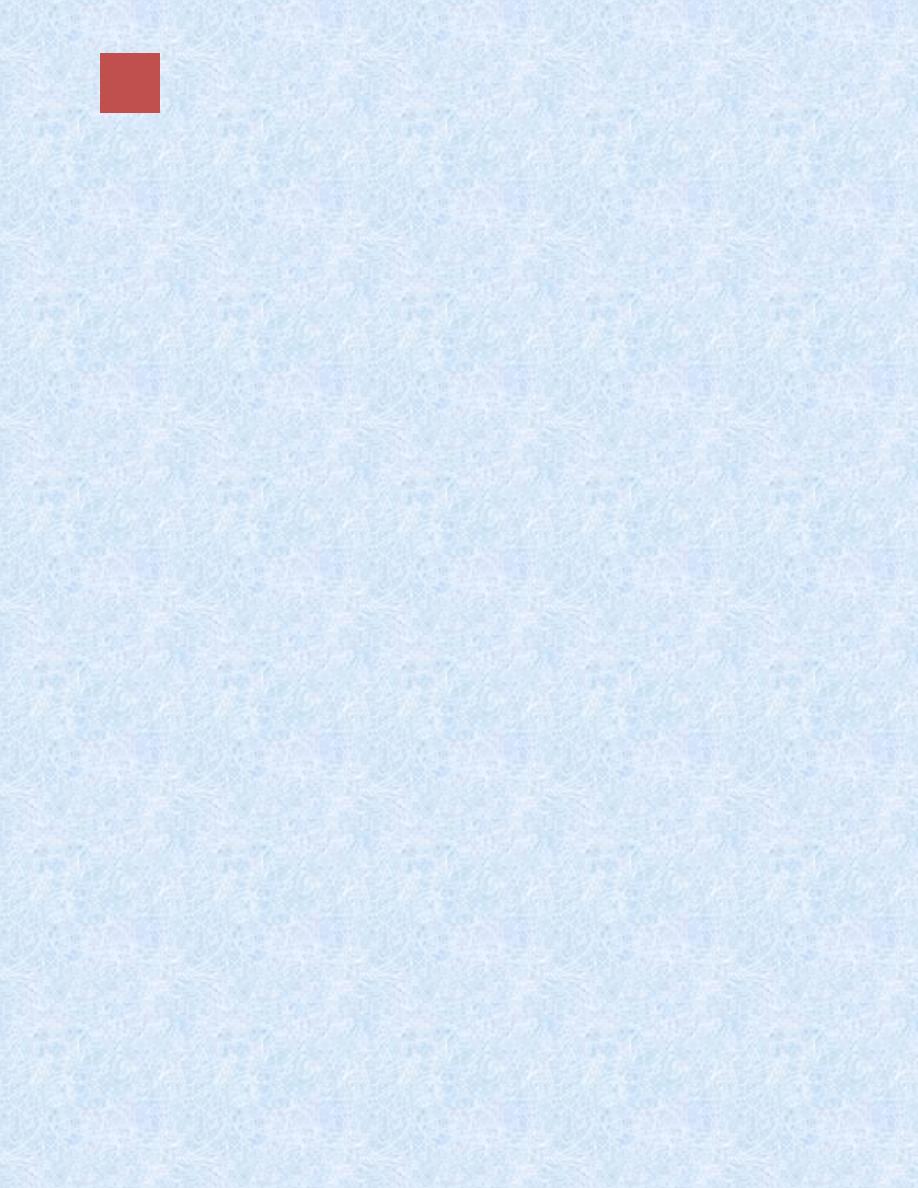
3
Hepatobiliary system Dr. KHAEEL IBRAHEEM
CT shows well demarcated round masses of lower density than
surrounding parenchyma. i.v. contrast enhancement is useful to
differentiate them from cysts & also to characterize some
hypervascular Secondaries.
MRI is excellent technique for demonstrating metastases. Most
metastases are of low signal on T1 & high signal T2.
□
Primary carcinomas (hepatocellular, cholangiocarcinoma) often
large & usually solitary but may be multifocal. Their CT, US & MRI
features are similar to metastatic neoplasms.
Benign lesions:
Liver cysts may be single or multiple & are usually congenital, some
are due to infection. Multiple cysts occur in adult polycystic disease.
US show a sharp margin, no echoes within the lesion & intense
echoes from the front & back walls.
CT shows well defined mass with water density. It is often not
possible to characterize small cysts.
MRI shows features similar to that of CT.
Hydatid cysts may be single or multiple; few show calcified walls.
Daughter cysts may be seen within the main cyst.
Occasionally, metastases can have a cystic appearance.
Hemangiomas are common & may resemble neoplasms at US. At CT,
it appears as a round, low density lesion but after contrast, the
density increases to become similar with surrounded liver. MRI
shows uniform very high intensity on T2.
Adenoma & focal nodular hyperplasia:
Both appear as enhancing masses on CT
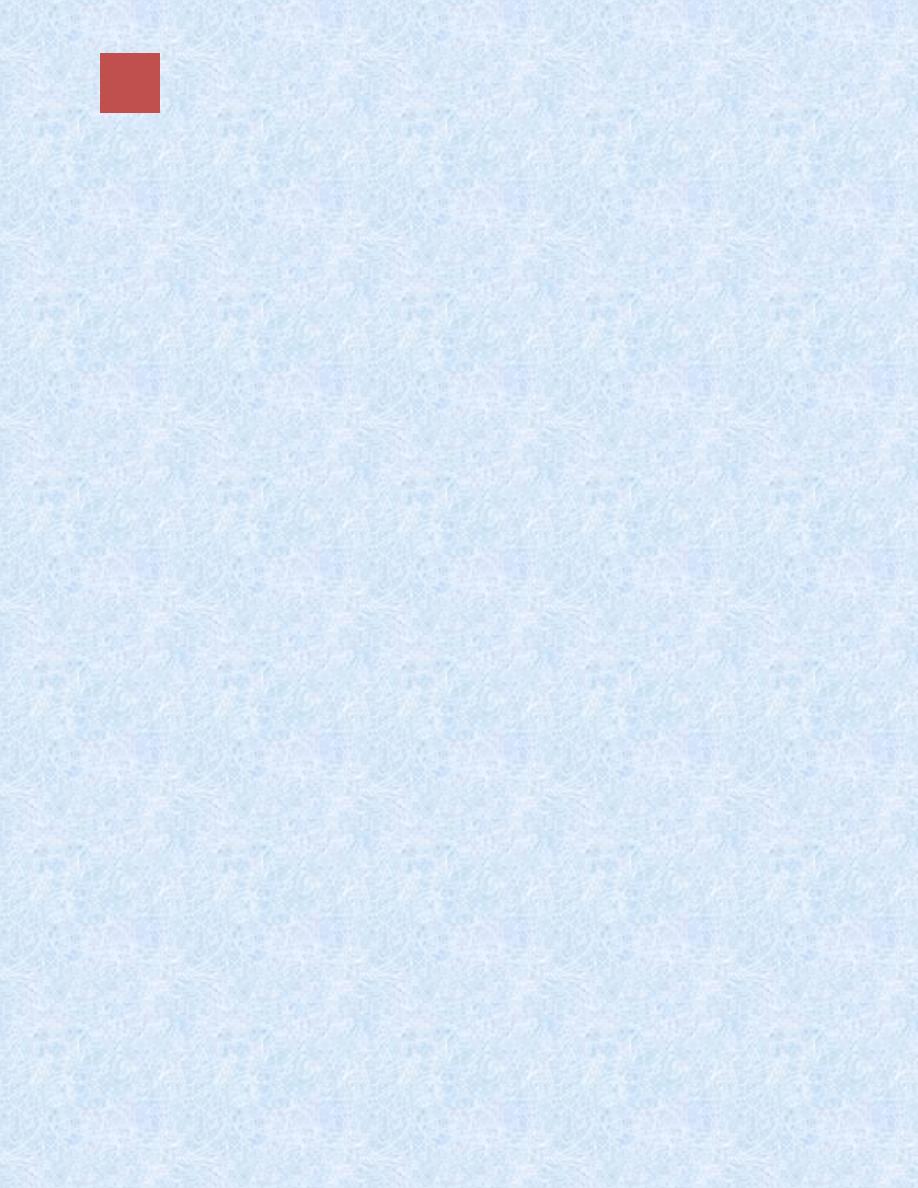
4
Hepatobiliary system Dr. KHAEEL IBRAHEEM
Liver abscess:
May appear similar to cysts but can usually be distinguished, tend to
have fluid centre, with thicker more irregular walls.
On CT, the attenuation value may be similar to water, but usually
higher.
At US, internal echoes may be seen within the abscess. Occasionally
chronic abscesses calcify.
Abscess can't usually be distinguished from necrotic tumors at either
US, CT or MRI.
Abscess can be aspirated under US guidance.
Cirrhosis & portal hypertension:
Cirrhosis is the most common cause of portal hypertension. Other
causes include occlusion of hepatic veins (Budd-Chiari syndrome) &
portal vein thrombosis.
Portosystemic anastomoses are formed in lower end of esophagus.
Signs of cirrhosis at CT & US are reduction in size of right hepatic
lobe & irregular surface together with splenomegally & ascites. The
texture of liver on US may be diffusely abnormal but appears normal
on CT until late in the disease.
Patency of the splenic, portal & hepatic veins can be assessed with
Doppler US, CT or MRI.
Liver trauma:
Can cause laceration +/- subcapsular & intraparenchymal
hematomas. These are recognized as low density areas relative to
surrounding liver. Leakage of contrast indicates active bleeding.
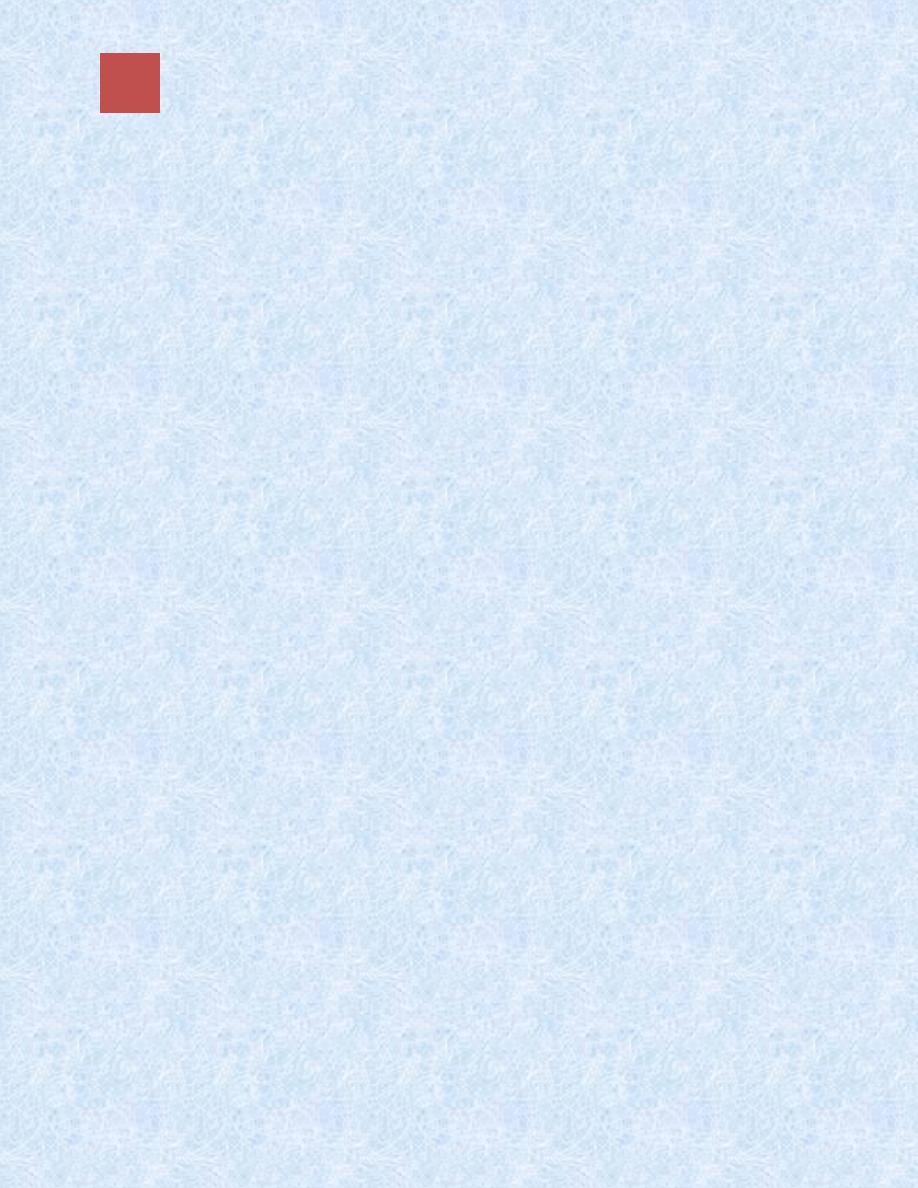
5
Hepatobiliary system Dr. KHAEEL IBRAHEEM
CT is the best technique for demonstration of liver injuries because
it demonstrates injuries to other organs.
Fatty degeneration of liver:
Is frequent finding especially in alcoholics & those who are
malnourished or debilitated for any other lesion. It may involve the
whole liver or focal.
On CT, it appears as reduction in attenuation of affected parenchyma.
On US, it appears as increased echogencity (bright liver). MRI can be
helpful in problematic cases.
Biliary system
US is the best method for investigation (simple, best for gall stones
& other GB diseases & for excluding bile duct dilatation)
Fasting is needed to distend the GB. GB wall thickening suggests acute
or chronic cholecystitis. Stones > 1-2 mm can be identified.
The normal CBD can be visualized in all patients & should not
measure > 7 mm. the normal intrahepatic tree is too small to be
visualized at US.
The lower end of CBD is often obscured by bowel gases.
Radionuclide imaging has an important role in excluding obstruction
of cystic duct & suspected acute cholecystitis.
ERCP is indicated to:
Determine the cause of jaundice & undertake Endoscopic treatment
{sphincterotomy, Endoscopic basket or balloon extraction may be
employed in cases of CBD stones}.
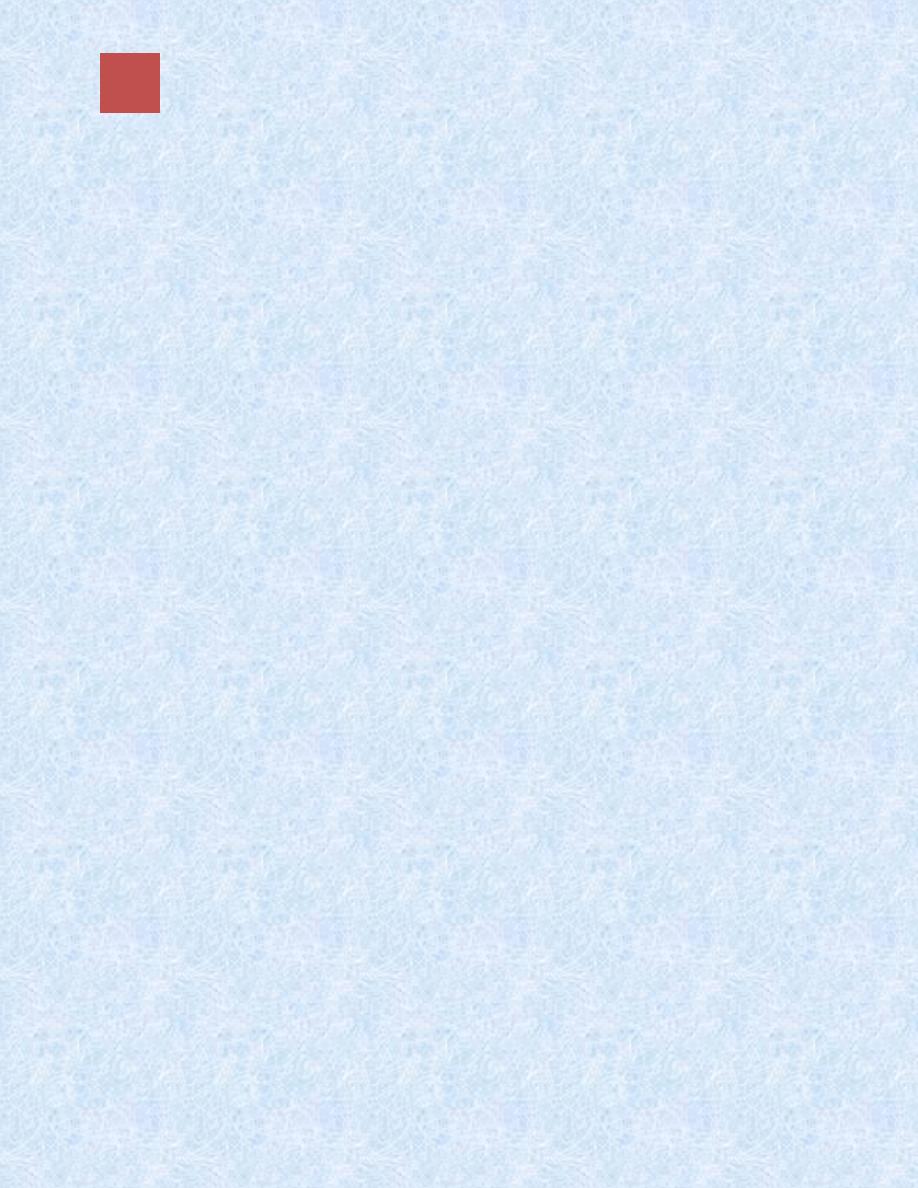
6
Hepatobiliary system Dr. KHAEEL IBRAHEEM
Endoscopic biopsy, brushings & stent placement are used in cases of
tumors.
Pancreatitis is an occasional complication of ERCP.
PTC shows the site & cause of obstruction in unsuccessful ERCP. It is
performed under LA & when the bile ducts are dilated by passing fine
needle through the abdominal wall to the liver. Hemorrhage is
occasional problem as are septicemia & biliary peritonitis. It can be
used to introduce stents across an obstruction.
MRCP: visualize the biliary & pancreatic ducts non-invasively & with
no contrast.
Note mentioned by doctor: the MRCP is just MRI without contrast, it’s
not an intervention
Gall stones & cholecystitis:
Stones are more frequent in middle aged females.
20% of gall stones are visible on plain film. On US, stones have
acoustic shadowing (that is not seen in polyps).
Polyps are usually small. Stones in CBD are much less reliably
diagnosed with US.
In acute cholecystitis, US show stones, inflammatory debris, and GB
wall thickening. US cannot distinguish between acute & chronic
cholecystitis.
Jaundice:
When imaging show dilated bile ducts, the type of jaundice is termed
obstructive jaundice. More often, imaging is used to determine the
site & if possible, the cause of jaundice.

7
Hepatobiliary system Dr. KHAEEL IBRAHEEM
Common causes of obstructive jaundice:
1. CBD stone.
2. Pancreatic carcinoma.
3. Ampullary carcinoma.
US is usually the first test to be performed in obstructive jaundice. US
can show dilated ducts & can demonstrate the level of obstruction &
sometimes the specific cause of biliary obstruction e.g. CBD Stone or
pancreatic head mass. More often the cause can't be seen mainly
because of overlying bowel gases.
CT may provide useful information about the cause of obstruction.
2 points should be appreciated:
1. Substantial dilatation of CBD may be present with only minimal
dilatation of intrahepatic biliary tree.
2. Intrahepatic biliary tree may not dilate at all within the 1
st
48
hours following obstruction.
PTC, ERCP & MRCP are other imaging techniques used in cases of
jaundice.
Spleen
At US, it has a homogenous appearance with the same echo density
as the liver. CT & MRI are excellent ways to examine the spleen.
The commonly encountered splenic masses are cysts including
hydatid, abscesses & tumors. Lymphoma is much more common than
metastases which are rare in spleen.
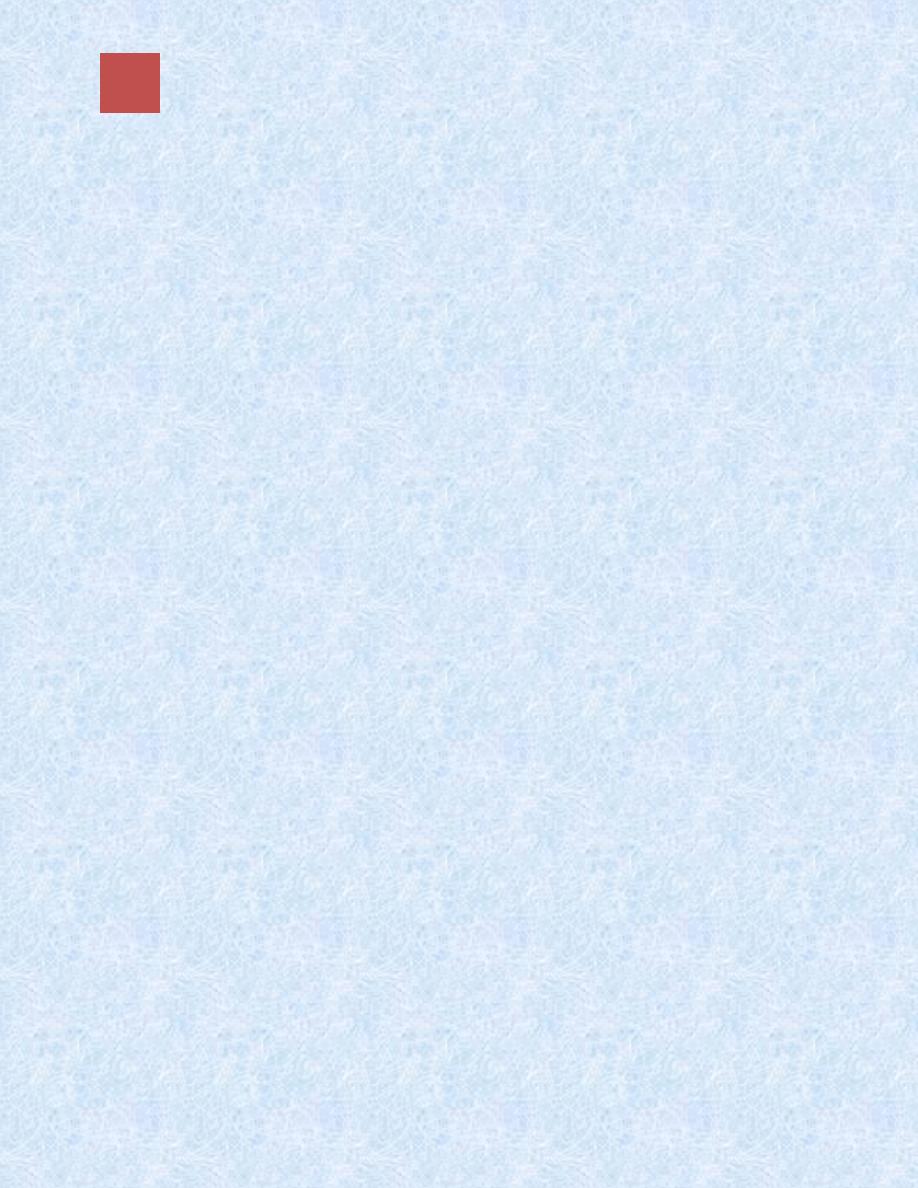
8
Hepatobiliary system Dr. KHAEEL IBRAHEEM
Many conditions cause splenomegally without change of US texture
or CT density, like in lymphoma, portal hypertension, chronic
infection & various blood disorders.
Splenic injury may be detected by US, but CT is a superior method of
investigation.
On plain films, changes of splenic rupture may be seen e.g. mass in
the upper abdomen that displaces adjacent structures +/- paralytic
ileus with fractures of lower ribs.
Pancreas
CT & US have become the mainstays for imaging the pancreas, but
imaging the pancreas with US is obscured by bowel gases.
Arteriographies, ERCP & MRI are used in selected cases.
The normal pancreas is retroperitoneal structure, of feathery
texture, surrounded by fat. The head nestles in duodenal loop, the
body lies in front of the superior mesenteric artery & vein & behind
the stomach with the tail situated near the hilum of spleen, and the
pancreatic duct is not visible on CT.
At US, the pancreas show uniform medium to high level echoes as
compared to liver. Atrophy is common with ageing.
Pancreatic masses:
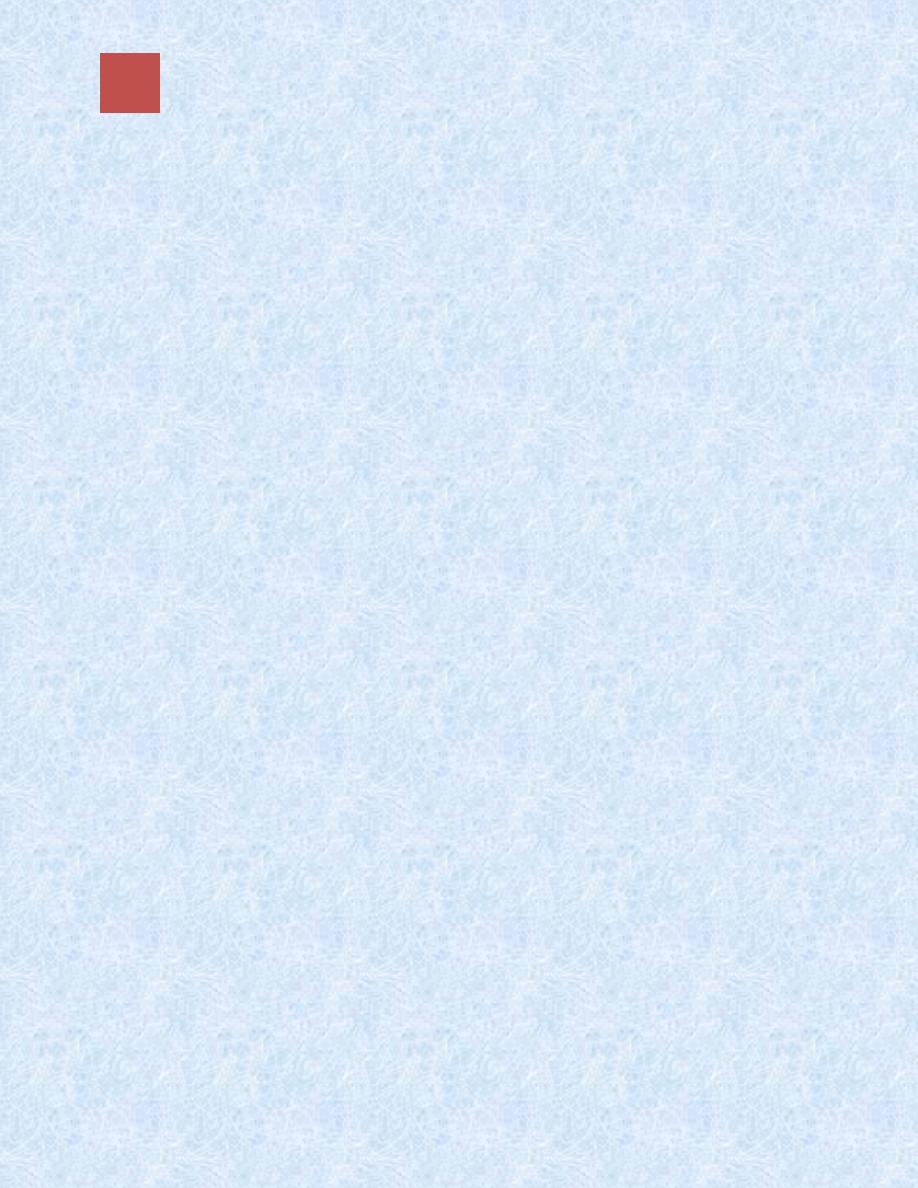
9
Hepatobiliary system Dr. KHAEEL IBRAHEEM
Can be carcinoma, neoplasm of adjacent LN, focal pancreatitis,
pancreatic abscess & pseudocyst formation & occasionally congenital
cysts.
Adenocarinoma: 2/3 of which occur in the pancreatic head (they
may obstruct the CBD).tumors in the body & tail have to be large to
give rise to signs & symptoms.
This tumor will give rise to a focal mass within or deforming
pancreatic outline & on CT; it appears of lower density in comparison
with normal pancreas. The dilated pancreatic duct can be seen on CT,
US or MRCP
Signs of irresectability: presence of liver metastases, LAP,
retroperitoneal invasion, tumor encasement of arteries & veins.
Endocrine secreting tumors: e.g. insolinoma. These are suggested by
biochemical investigations. They are small, difficult to detect & don't
deform the pancreatic contour. They may be seen on US, CT or MRI.
Sometimes selective angiography is required as these tumors are
hypervascular. Somatostatin receptor radionuclide scans may also
demonstrate the tumor & any metastases.
Acute pancreatitis:
The imaging findings are variable. The pancreas is usually enlarged,
often diffusely with irregular outline (due to extension of
inflammatory process into the surrounding fat. There may be low
density areas at CT or echo-poor areas at US (edema & necrosis).
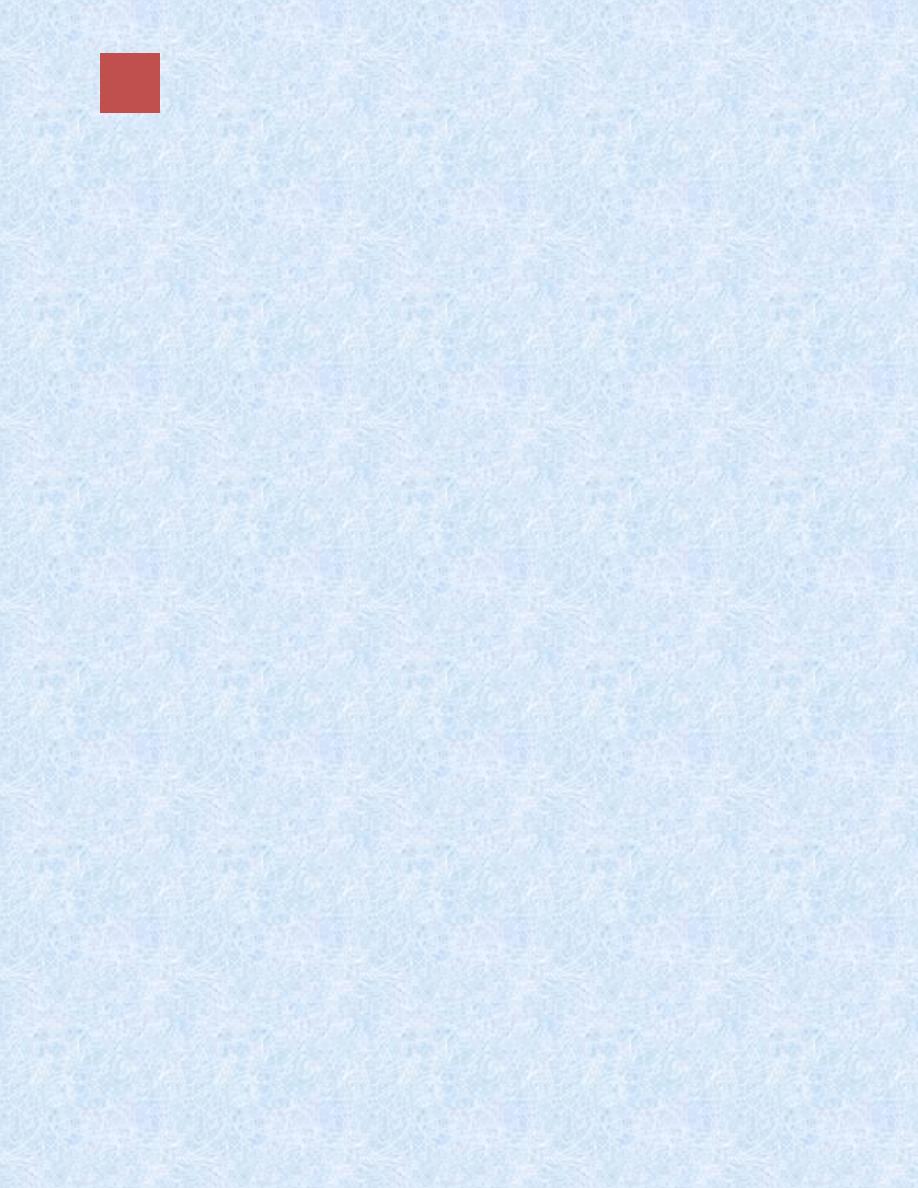
10
Hepatobiliary system Dr. KHAEEL IBRAHEEM
The diagnosis is usually made on clinical & biochemical grounds, the
purpose of CT is to assess the severity & complications:
1. Pancreatic necrosis (no enhancement).
2. An abscess (fluid collection with or without gas).
3. Vascular complications (e.g. splenic vein thrombosis, arterial
erosion & formation of pseudoaneurysm).
4. Pseudocyst occurs as a result of leak of pancreatic secretions that
are contained in a cyst like manner within & adjacent to the pancreas.
They can be demonstrated with CT or US as thick or thin walled cysts
of variable size. They may resolve or persist & need surgical or
percutaneous drainage.
Chronic pancreatitis:
Results in fibrosis, calcifications & ductal stenosis & dilatation.
Pseudocyst may be seen.
The calcifications are often recognizable on plain films, US & CT.
there may focal or generalized enlargement or atrophy. The
pancreatic duct may be enlarged & irregular.
Pancreatic trauma:
Associated with injuries to other organs. CT is best for assessment.
There may be lacerations, hematomas & traumatic pancreatitis &
pseudocyst formations.
